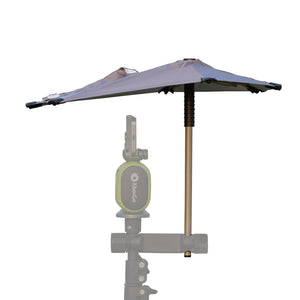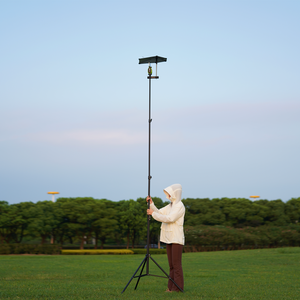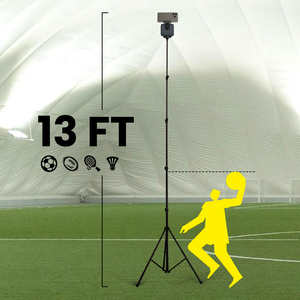XbotGo Chameleon AI Sports Camera
La historia del fútbol explicada
La historia del fútbol se remonta a más de 2000 años, atravesando continentes y culturas para convertirse en el deporte más popular del mundo. Lo que comenzó como un simple juego de patear el balón en las civilizaciones antiguas se ha convertido en un deporte sofisticado jugado por 240 millones de personas y visto por miles de millones más. Este es el extraordinario viaje de cómo el fútbol conquistó el mundo.
Orígenes antiguos: Los primeros juegos de pelota
Mucho antes de los estadios y las ligas profesionales, los humanos sentían atracción por patear objetos. La evidencia registrada más antigua proviene de la antigua China, durante la dinastía Han (206 a. C. - 220 d. C.), donde las fuerzas militares practicaban un juego llamado * Cuju *, que literalmente significa "patear la pelota".
Los soldados chinos utilizaban el cuju como ejercicio de entrenamiento, pateando una pelota de cuero rellena de plumas a través de una pequeña red sin usar las manos. Sorprendentemente, también participaban mujeres, y los registros históricos demuestran que a menudo demostraban una habilidad superior a la de sus compañeros masculinos. El juego se popularizó tanto que trascendió los campamentos militares y se extendió a la vida civil, surgiendo jugadores profesionales de cuju durante la dinastía Song.
Pero China no fue la única en desarrollar juegos de patear pelotas. Civilizaciones antiguas de todo el mundo crearon deportes similares:
Grecia y Roma : Los griegos jugaban al Episkyros, mientras que los romanos disfrutaban del Harpastum . Estos juegos implicaban que dos equipos intentaran mantener el balón en su mitad del campo, aunque permitían más contacto físico y manejo del balón que el fútbol moderno.
Mesoamérica : Los mayas y los aztecas practicaban juegos de pelota rituales con pelotas de goma, a menudo con significado religioso. Estos juegos podían tener consecuencias mortales: los capitanes perdedores podían ser sacrificados a los dioses.
Japón : Un juego ceremonial llamado Kemari surgió alrededor del año 600 d. C., centrado en mantener la pelota en el aire mediante el juego cooperativo. A diferencia de los deportes competitivos, el Kemari priorizaba la gracia y la habilidad por encima de la victoria.
Australia aborigen : El juego indígena de Marn Gook , que implica principalmente patadas, puede haber influido en los códigos del fútbol australiano posterior.
Caos medieval: cuando el fútbol significaba guerra
Para el siglo XII, una variante del fútbol había llegado a la Europa medieval, pero guardaba poca similitud con el deporte organizado actual. El «fútbol popular» era menos un juego y más una batalla oficial entre pueblos vecinos.
Estas partidas involucraban a un número ilimitado de jugadores —a veces aldeas enteras— que perseguían una vejiga de cerdo inflada por territorios indefinidos que podían extenderse kilómetros. ¿La única regla constante? No matar (aunque incluso esto se pasaba por alto en ocasiones). Los jugadores podían patear, llevar o lanzar el balón, utilizando cualquier medio necesario para moverlo a marcadores predeterminados, a menudo ubicados en aldeas rivales.
El caos fue extraordinario. Los partidos se extendieron por calles, campos, arroyos y propiedades privadas. Las lesiones eran frecuentes, se esperaban daños materiales, y todo el espectáculo sirvió tanto para aliviar las tensiones entre los pueblos como para entretener.
El fútbol medieval se volvió tan disruptivo que las autoridades intentaron prohibirlo repetidamente. El rey Eduardo II promulgó la primera prohibición en 1314, preocupado por el descuido de la práctica del tiro con arco, crucial para el ejército inglés. Su proclamación declaraba que «dado el gran ruido que se produce en la ciudad a causa de las disputas por grandes balones de fútbol», la actividad debía cesar.
Entre 1314 y 1667 se produjeron más de 30 prohibiciones más. Los reyes Eduardo III, Ricardo II y Enrique IV emitieron decretos contra el fútbol. Los castigos iban desde multas hasta prisión. Sin embargo, el juego persistió, pasando a la clandestinidad cuando era necesario, lo que demuestra su arraigado atractivo entre la gente común.
La Gran Transformación: El Nacimiento del Fútbol Moderno
La transición del caos medieval al fútbol moderno comenzó en las escuelas de élite de Inglaterra a principios del siglo XIX. A medida que la Revolución Industrial transformaba la sociedad, escuelas públicas como Eton, Rugby, Winchester y Charterhouse comenzaron a organizar el fútbol como una actividad invernal para fortalecer el carácter.
Cada escuela desarrolló sus propias reglas:
- Eton : Se enfatizó el pateo y el regate, se prohibió el manejo.
- Rugby : Se permite atrapar y correr con la pelota.
- Winchester : interpretó una versión confinada en claustros.
- Charterhouse : Pase desarrollado debido al espacio limitado
Esta variedad creaba problemas cuando estudiantes de diferentes escuelas se encontraban en la universidad. Los partidos requerían largas negociaciones sobre las reglas a seguir. Algunas escuelas permitían el "hacking" (patadas en las espinillas de los oponentes), otras lo prohibían. Algunas permitían las manos, otras no.
Las Reglas de Cambridge de 1848 representaron el primer intento de estandarización. Estudiantes de diversas escuelas se reunieron para crear un código unificado, estableciendo principios como:
- Los goles se deben marcar con el pie.
- Los jugadores no pueden sujetar a los oponentes.
- Se permite atrapar la pelota, pero no correr con ella.
26 de octubre de 1863: el cumpleaños del fútbol
El momento decisivo llegó una tarde de otoño en la Freemason's Tavern de Great Queen Street, Londres. Representantes de doce clubes se reunieron para formar la Asociación de Fútbol y establecer reglas universales.
Las reuniones fueron polémicas. La pregunta fundamental: ¿debería permitirse a los jugadores llevar el balón? Tras seis reuniones y acalorados debates, la facción contra las manos ganó. Esta decisión separó oficialmente el «fútbol asociación» del «rugby», creando dos deportes distintos.
Las reglas originales de 1863 parecen pintorescas hoy en día:
- Sin travesaños en las porterías (solo cinta entre los postes)
- Sin árbitro (los capitanes resuelven las disputas)
- Sin penaltis ni tarjetas rojas
- Los saques de banda pueden ir en cualquier dirección
- Fuera de juego si el jugador estaba por delante del balón
La primera era internacional
El desarrollo del fútbol se aceleró rápidamente. La FA Cup se inauguró en 1871, convirtiéndose en la competición nacional de fútbol más antigua del mundo. Al año siguiente se celebró el primer partido internacional: Inglaterra contra Escocia en el Hamilton Crescent de Glasgow.
Este histórico partido , celebrado el 30 de noviembre de 1872, atrajo a 4.000 espectadores que pagaron un chelín cada uno. Las formaciones de los equipos desconcertarían a la afición moderna: Escocia jugó con un 2-2-6, mientras que Inglaterra utilizó un 1-2-7. A pesar de estas alineaciones ofensivas, el partido terminó 0-0, estableciendo una tradición de defensa táctica escocesa contra el ataque inglés.
En las décadas de 1870 y 1880 se produjeron acontecimientos cruciales:
- 1878 : Primer fósforo iluminado con luz eléctrica
- 1882 : Se forma la Junta de la Asociación Internacional de Fútbol para supervisar las reglas
- 1885 : El profesionalismo se legalizó después de que los clubes del norte comenzaron a pagar a los jugadores.
- 1888 : Se establece la Football League, la primera liga profesional del mundo.
Expansión global: Imperio e inmigración
La propagación del fútbol desde Inglaterra hasta convertirse en un fenómeno mundial se produjo con una velocidad notable, impulsada por la influencia británica y el comercio internacional.
Europa (década de 1880-década de 1900) :
- Los Países Bajos y Dinamarca formaron asociaciones en 1889
- Bélgica, Suiza e Italia siguieron su ejemplo en la década de 1890.
- El club más antiguo de España, el Recreativo de Huelva, fundado por mineros británicos en 1889
- Alemania se resistió inicialmente, considerando el fútbol como "la enfermedad inglesa".
América del Sur (década de 1890-década de 1910) :
Los trabajadores ferroviarios y marineros británicos introdujeron el fútbol en las ciudades portuarias:
- El primer partido de Argentina en 1867 involucró a residentes británicos
- Brasil recibió el fútbol a través de Charles Miller, quien regresó de la escuela inglesa en 1894.
- La rápida adopción por parte de Uruguay condujo a medallas de oro olímpicas en 1924 y 1928.
África y Asia (década de 1900-1920) :
Los administradores coloniales, los misioneros y los comerciantes difundieron el juego:
- Sudáfrica formó su asociación en 1892
- Egipto estableció clubes en la década de 1900.
- El primer partido oficial de Japón en 1917
La revolución profesional
La legalización del profesionalismo en 1885 transformó el fútbol, que pasó de ser un pasatiempo de caballeros a una pasión de la clase trabajadora. Este cambio causó controversia inicial: los clubes amateurs del sur consideraban que el pago corrompía el noble espíritu del deporte, mientras que los clubes industriales del norte argumentaban que los trabajadores merecían una compensación por los salarios perdidos.
La formación de la Football League en 1888 creó la estructura para la competición profesional. Los doce miembros fundadores se enfrentaron dos veces, de local y de visitante, estableciendo el formato que aún se utiliza hoy en día. El Preston North End dominó la temporada inaugural, ganándose el apodo de "Los Invencibles" tras mantenerse invicto.
El fútbol profesional trajo consigo varias innovaciones:
Desarrollo táctico : Los equipos comenzaron a emplear entrenadores centrados en la estrategia, en lugar de solo en la selección. El "juego de pases" escocés desafió las tácticas inglesas de "patadas y carreras", lo que dio lugar a un juego más sofisticado.
Evolución de los estadios : Los clubes construyeron terrenos adecuados para albergar a los espectadores que pagaban entrada. Goodison Park (1892) se convirtió en el primer estadio de fútbol construido específicamente para este fin en Inglaterra. Para 1894, la final de la Copa FA atrajo a 37.000 espectadores.
Cobertura mediática : Los periódicos crearon secciones deportivas especializadas. Las crónicas de los partidos, los perfiles de los jugadores y los análisis tácticos fomentaron la participación de los aficionados, más allá de los aficionados.
Mercado de fichajes : Los jugadores se convertían en activos, comprados y vendidos entre clubes. El primer traspaso de 100 libras en 1893 (Willie Groves del West Bromwich al Aston Villa) impactó a los observadores.
La FIFA y la Organización Internacional
A medida que el fútbol se expandía globalmente, se hizo evidente la necesidad de coordinación internacional. El 21 de mayo de 1904, representantes de siete naciones se reunieron en París para formar la FIFA (Fédération Internationale de Football Association).
Los miembros fundadores —Francia, Bélgica, Dinamarca, Países Bajos, España, Suecia y Suiza— excluyeron notablemente a Inglaterra. La Asociación Inglesa de Fútbol (FA), considerándose la creadora del fútbol, se negó inicialmente a unirse a un organismo internacional. Cedieron en 1905, pero mantuvieron una relación tensa, retirándose y reincorporándose en múltiples ocasiones.
Los primeros logros de la FIFA:
- Normas internacionales estandarizadas
- Organizó el primer torneo internacional oficial (1906)
- Se reconoce la brecha entre aficionados y profesionales
- Intentó su primera Copa del Mundo en 1906 (fracasó por falta de inscripciones)
La Copa del Mundo: el máximo escenario del fútbol
El presidente de la FIFA, Jules Rimet, finalmente hizo realidad su sueño de un torneo mundial en 1930. Uruguay, que celebraba su centenario y venía de sus victorias olímpicas, fue sede de la Copa Mundial inaugural.
Solo participaron 13 equipos; muchos europeos declinaron el largo viaje por mar. Sin embargo, el éxito del torneo sentó las bases de lo que se convertiría en el evento deportivo más visto.
Hitos tempranos de la Copa Mundial:
1934 (Italia) : Primer torneo que requirió clasificación, ampliándose de 16 a 32 participantes.
1938 (Francia) : Último torneo antes de la Segunda Guerra Mundial, interrumpido durante 12 años.
1950 (Brasil) : El "Maracanazo": la impactante victoria de Uruguay ante 200.000 personas en Río
1954 (Suiza) : Primera Copa Mundial televisada, difundiendo el atractivo visual del fútbol.
1958 (Suecia) : La aparición de Pelé a los 17 años, marcando seis goles para el victorioso Brasil.
La revolución de la televisión
La televisión transformó el fútbol, que pasó de ser un entretenimiento local a un espectáculo global. La transmisión del Mundial de 1954 llegó a millones de personas, aunque inicialmente solo en Europa. Para el Mundial de 1966 en Inglaterra, la tecnología satelital permitió su visualización en todo el mundo.
El impacto de la televisión fue profundo:
- Evolución táctica : los entrenadores podrían estudiar a los oponentes en vídeo
- Creación de estrellas : Los jugadores se convirtieron en celebridades reconocibles
- Crecimiento comercial : los ingresos por patrocinio y publicidad se dispararon
- Cambios de reglas : Se realizaron modificaciones para una mejor visualización (regla del pase hacia atrás, ajustes del fuera de juego)
Desarrollos modernos: el juego contemporáneo
A finales del siglo XX se produjeron cambios importantes:
Década de 1990 - Comercialización :
- La formación de la Premier League en 1992 revolucionó los derechos de transmisión
- La Liga de Campeones sustituyó a la Copa de Europa, ampliando los ingresos
- Las tarifas de transferencia aumentaron de millones a decenas de millones
Años 2000 - Globalización :
- Cobertura mundial instantánea habilitada para Internet
- Los mercados asiáticos y estadounidenses se expandieron rápidamente
- El fútbol femenino alcanzó estatus profesional
- La tecnología entró en las discusiones sobre el arbitraje
Década de 2010 - Integración de tecnología :
- Se introdujo la tecnología de línea de gol (2012)
- Implementación del VAR (Árbitro Asistente de Vídeo) (2018)
- Las redes sociales conectaron directamente a los jugadores con los fanáticos
- El análisis transformó las tácticas y el reclutamiento de jugadores
El fútbol moderno también ha presenciado la democratización del análisis a nivel profesional. Donde antes solo los clubes de élite podían permitirse grabaciones y análisis completos de los partidos, hoy los equipos juveniles pueden acceder a tecnología de grabación sofisticada. Dispositivos como el XbotGo Chameleon pueden seguir automáticamente las jugadas, reconocer a los jugadores por sus números de camiseta y crear videos de momentos destacados al instante, lo que aporta capacidades de documentación profesional al fútbol base.
Fútbol femenino: la otra mitad de la historia
Aunque a menudo se pasa por alto, las mujeres han jugado al fútbol desde sus inicios. El British Ladies' Football Club, fundado en 1894, atraía a más de 10.000 espectadores antes de la Primera Guerra Mundial. Sin embargo, la FA prohibió a las mujeres usar sus campos afiliados en 1921, alegando que el fútbol era "inapropiado para mujeres".
Esta prohibición, vigente hasta 1971, obstaculizó gravemente el desarrollo del fútbol femenino. A pesar de las restricciones, las mujeres siguieron jugando.
- La liga femenina de Italia comenzó en 1968
- La primera Copa Mundial Femenina no oficial en 1970 (ganada por Dinamarca)
- La Copa Mundial Femenina oficial de la FIFA se lanzó en 1991
- El fútbol femenino se convirtió en deporte olímpico en 1996
Hoy en día, el fútbol femenino experimenta un crecimiento sin precedentes, con ligas profesionales en todo el mundo y una creciente inversión en su desarrollo.
Impacto cultural: más que un juego
La influencia del fútbol se extiende mucho más allá del campo:
Símbolo político : La "Guerra del Fútbol" de 1969 entre Honduras y El Salvador; el Mundial de 1978 durante la dictadura militar argentina; Nelson Mandela utilizó la Copa Mundial de Rugby de 1995 para unir a Sudáfrica (aunque en el rugby demostró el poder político del deporte).
Fuerza económica : El deporte genera cientos de miles de millones de dólares al año y emplea a millones de personas en todo el mundo en las industrias del juego, el entrenamiento, la administración, los medios de comunicación y el apoyo.
Conector social : Desde las favelas brasileñas hasta las comunidades de clase trabajadora inglesas, el fútbol brinda identidad, esperanza y cohesión comunitaria.
Inspiración artística : Innumerables películas, libros, canciones y obras de arte celebran el drama y la belleza del fútbol.
El atractivo perdurable del deporte rey
¿Qué explica la evolución del fútbol desde un antiguo ejercicio militar hasta convertirse en una obsesión global? Diversos factores convergen:
Simplicidad : El concepto básico (patear la pelota hacia el arco) no requiere explicación.
Accesibilidad : Se necesita un equipo mínimo; cualquier espacio se convierte en un campo.
Universalidad : El tamaño físico es menos importante que la habilidad y la inteligencia.
Drama : Los bajos puntajes crean tensión; momentos únicos deciden los partidos
Comunidad : La pasión compartida trasciende el idioma, la cultura y la clase.
XbotGo Chameleon AI Sports Camera
Capture every moment with AI-powered tracking. Perfect for coaches, parents, and athletes who want seamless footage without manual filming.







 Soccer
Soccer Basketball
Basketball Ice Hockey
Ice Hockey Rugby
Rugby





























